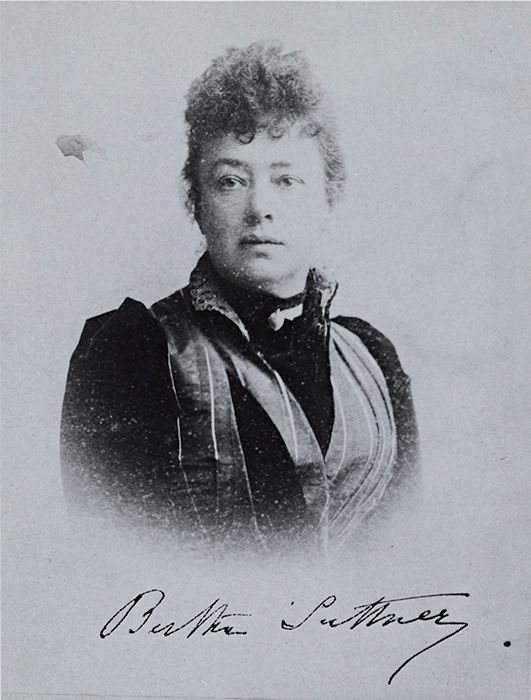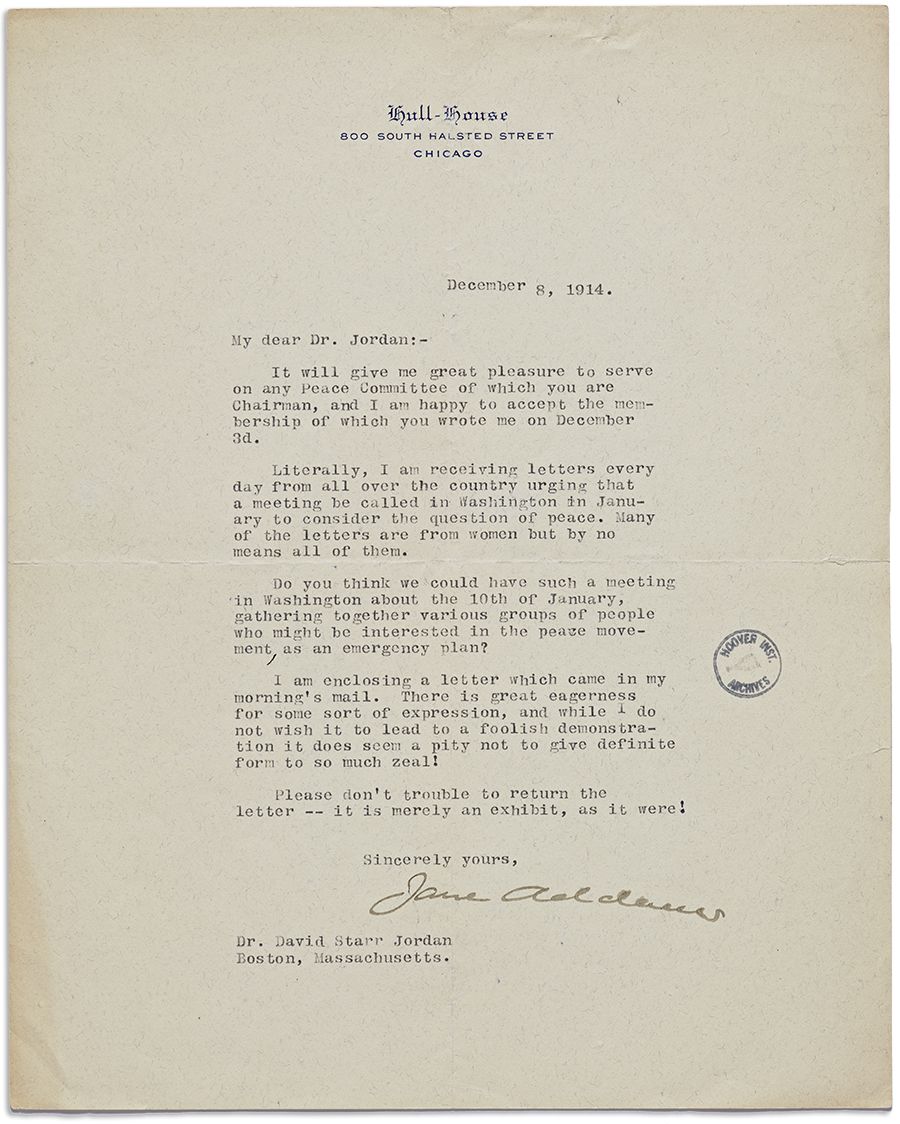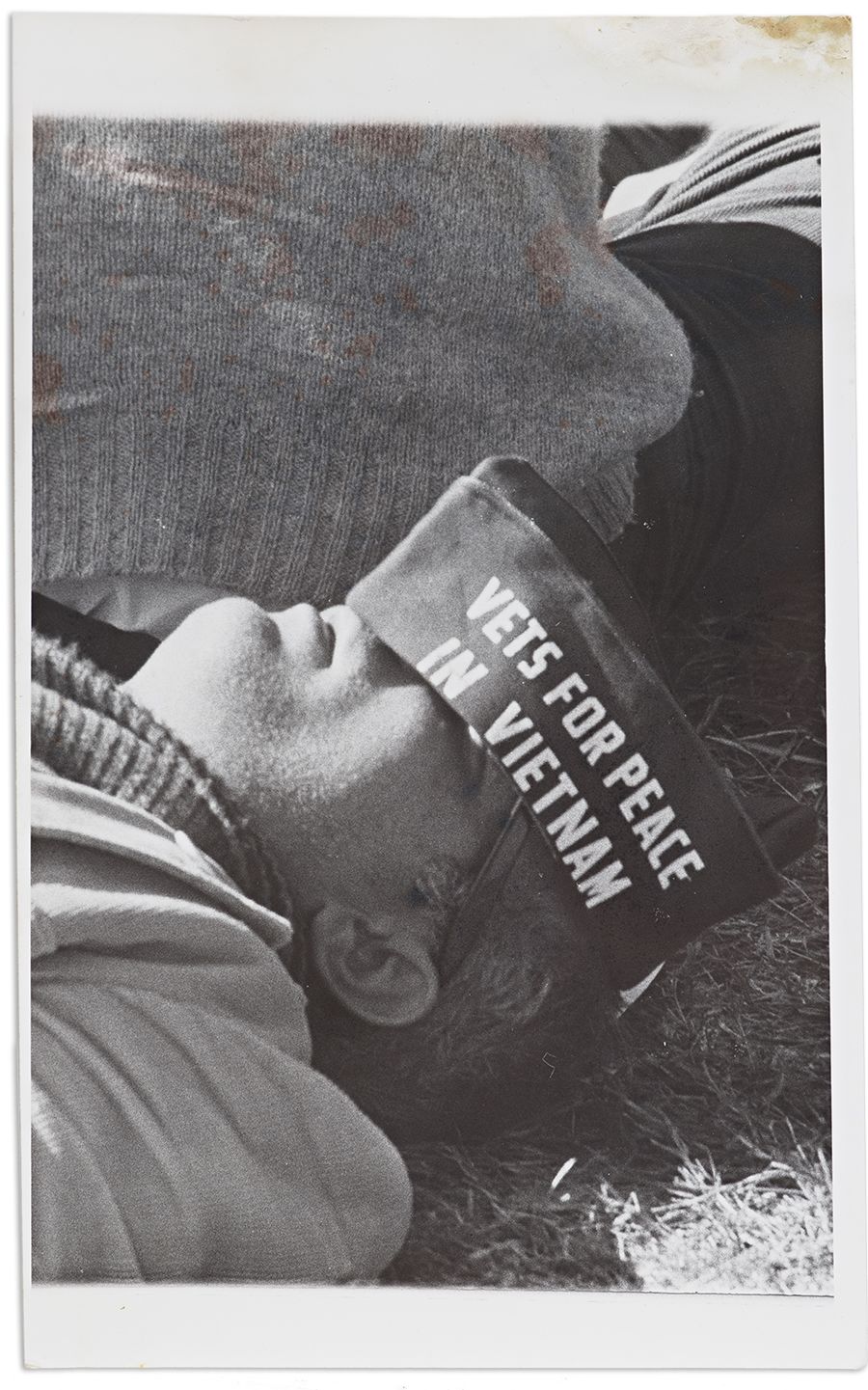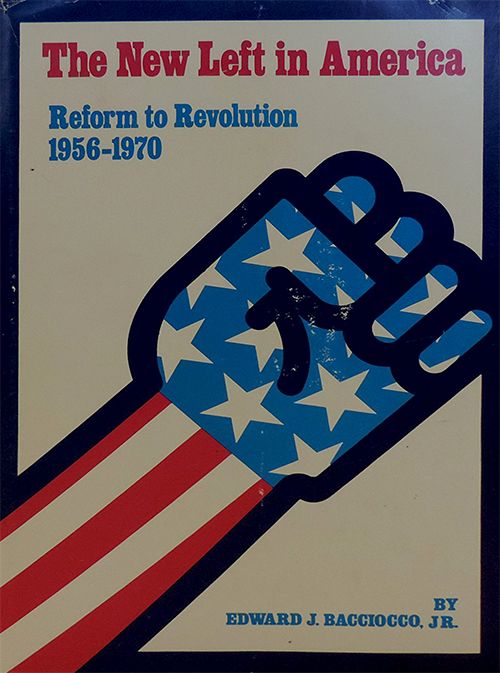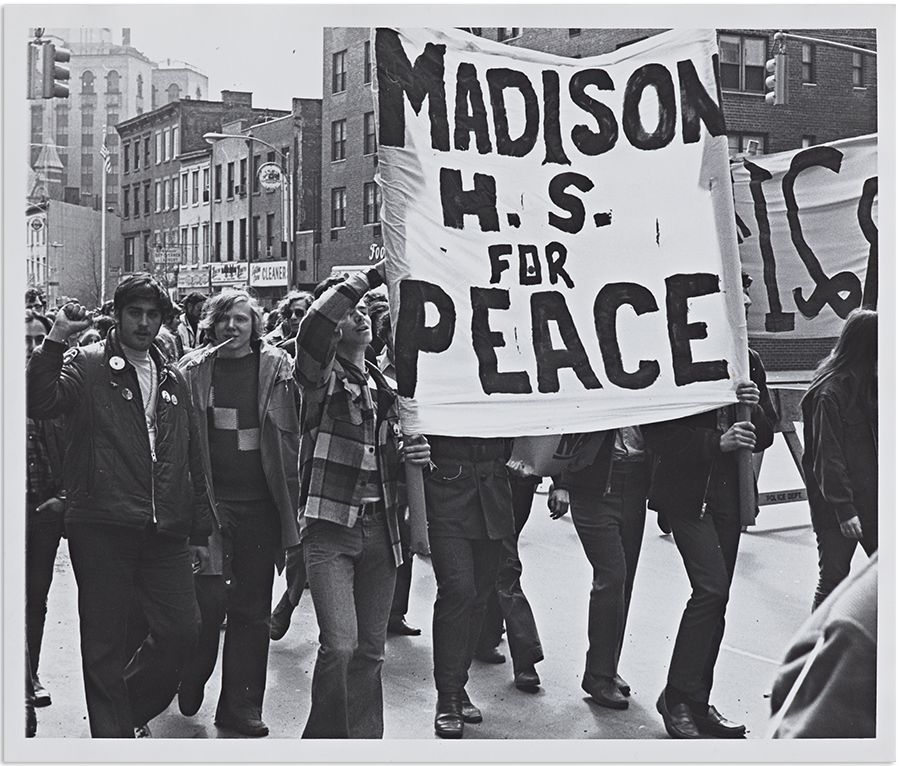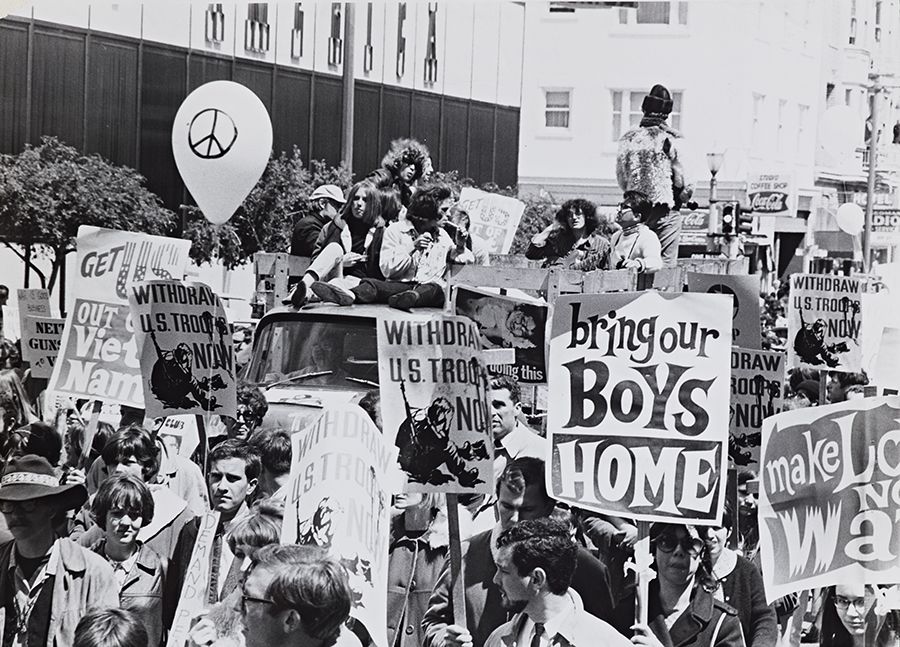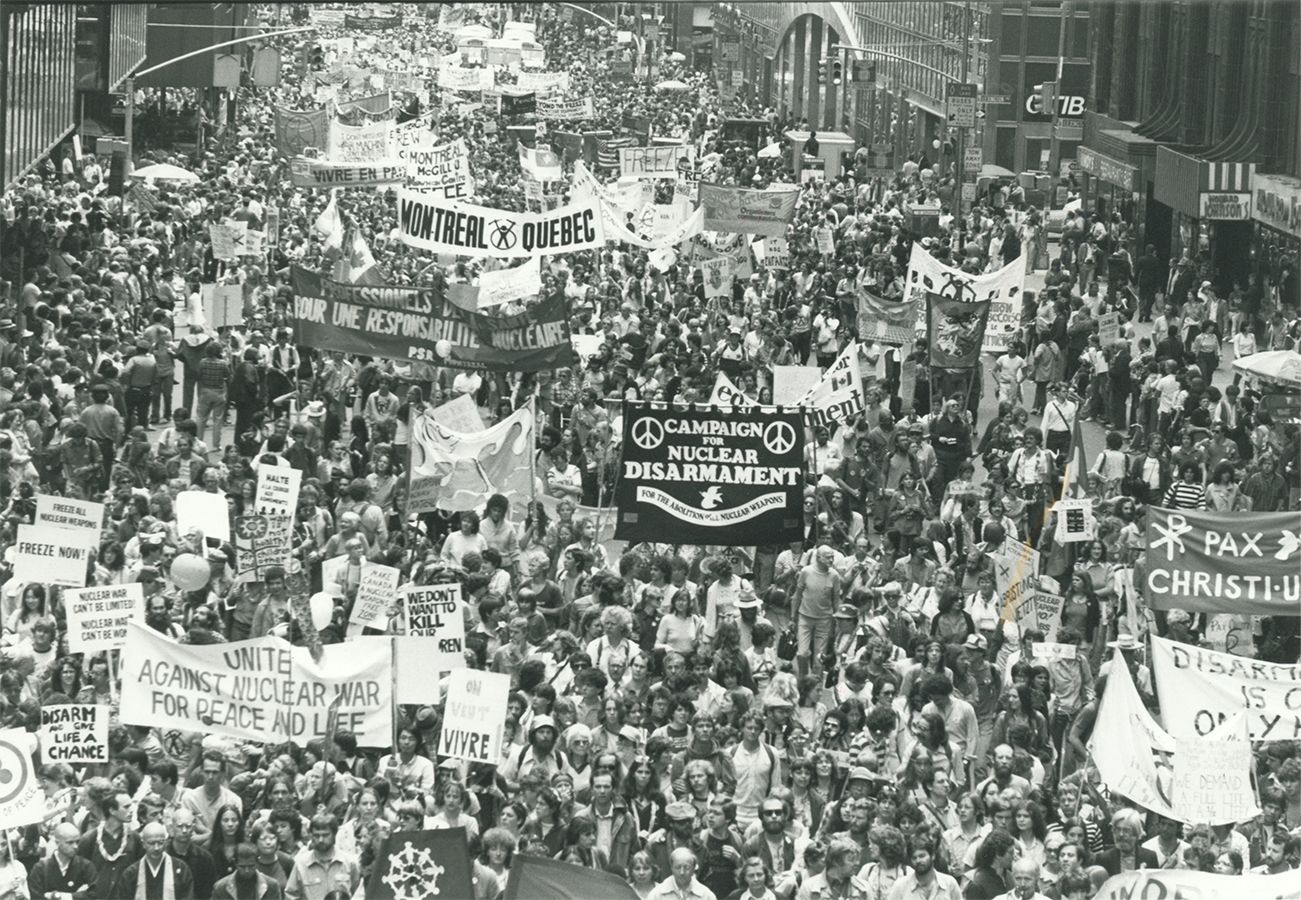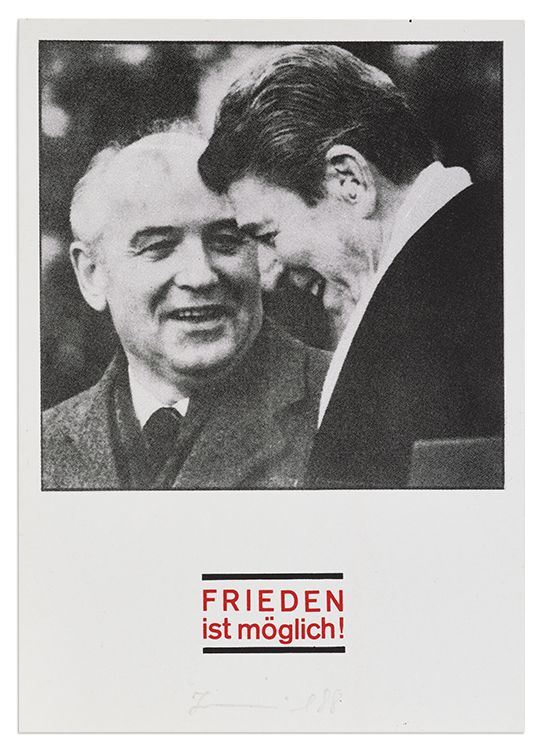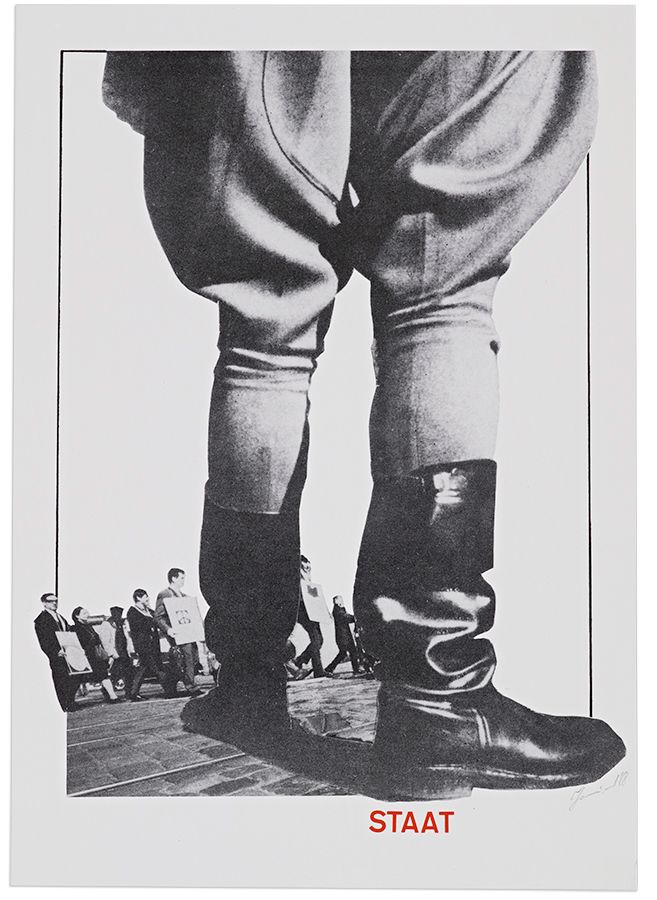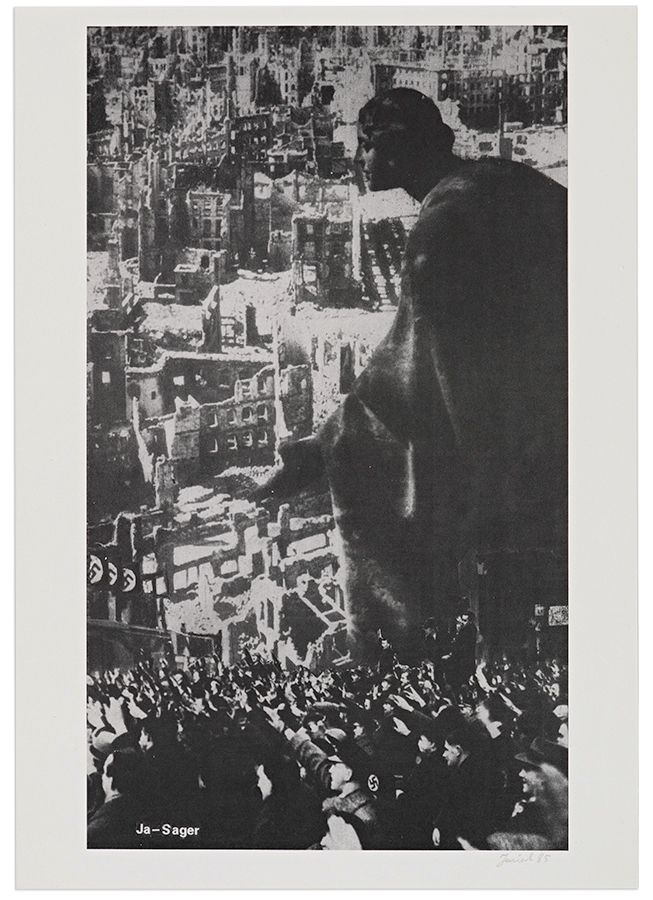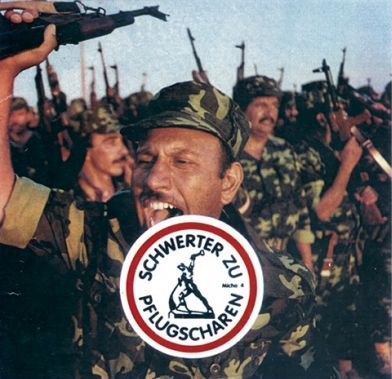Visualizing Peace
Peace Movements in the Archives
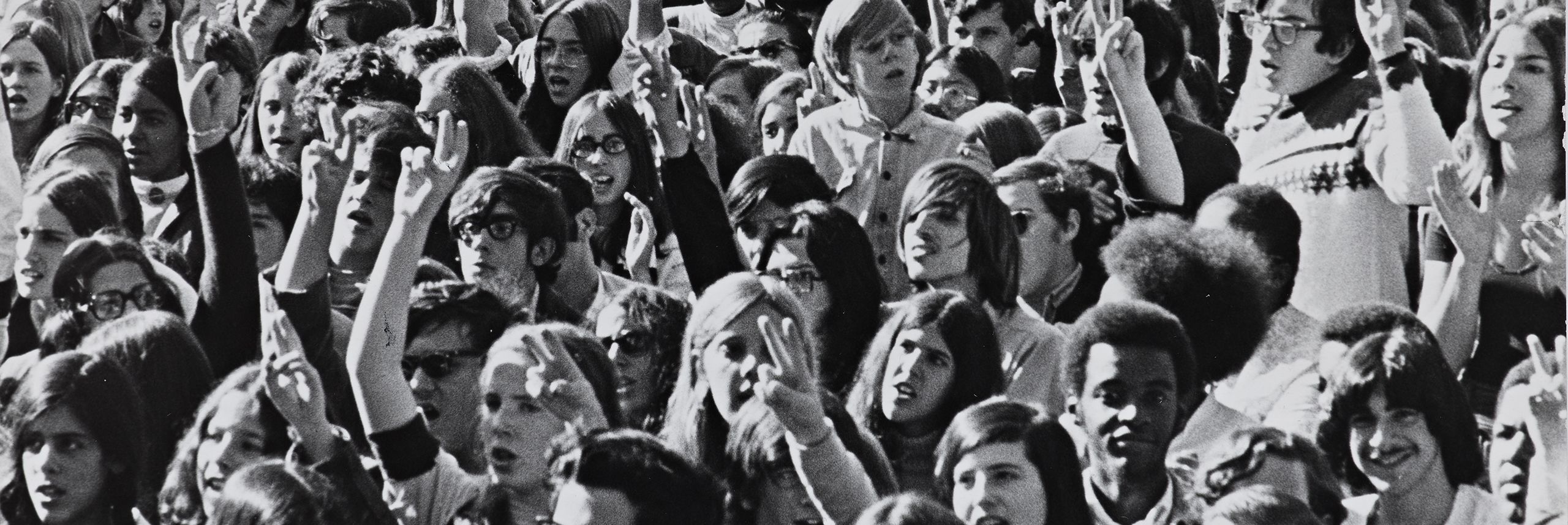
Throughout the twentieth century, organizations dedicated to the achievement of world peace produced and distributed pins, posters, flyers, and pamphlets in order to spread their message and to win sympathy for their cause among the general public. Since its founding in 1919, the Hoover Institution has collected such items as a visual record of this pursuit of peace.
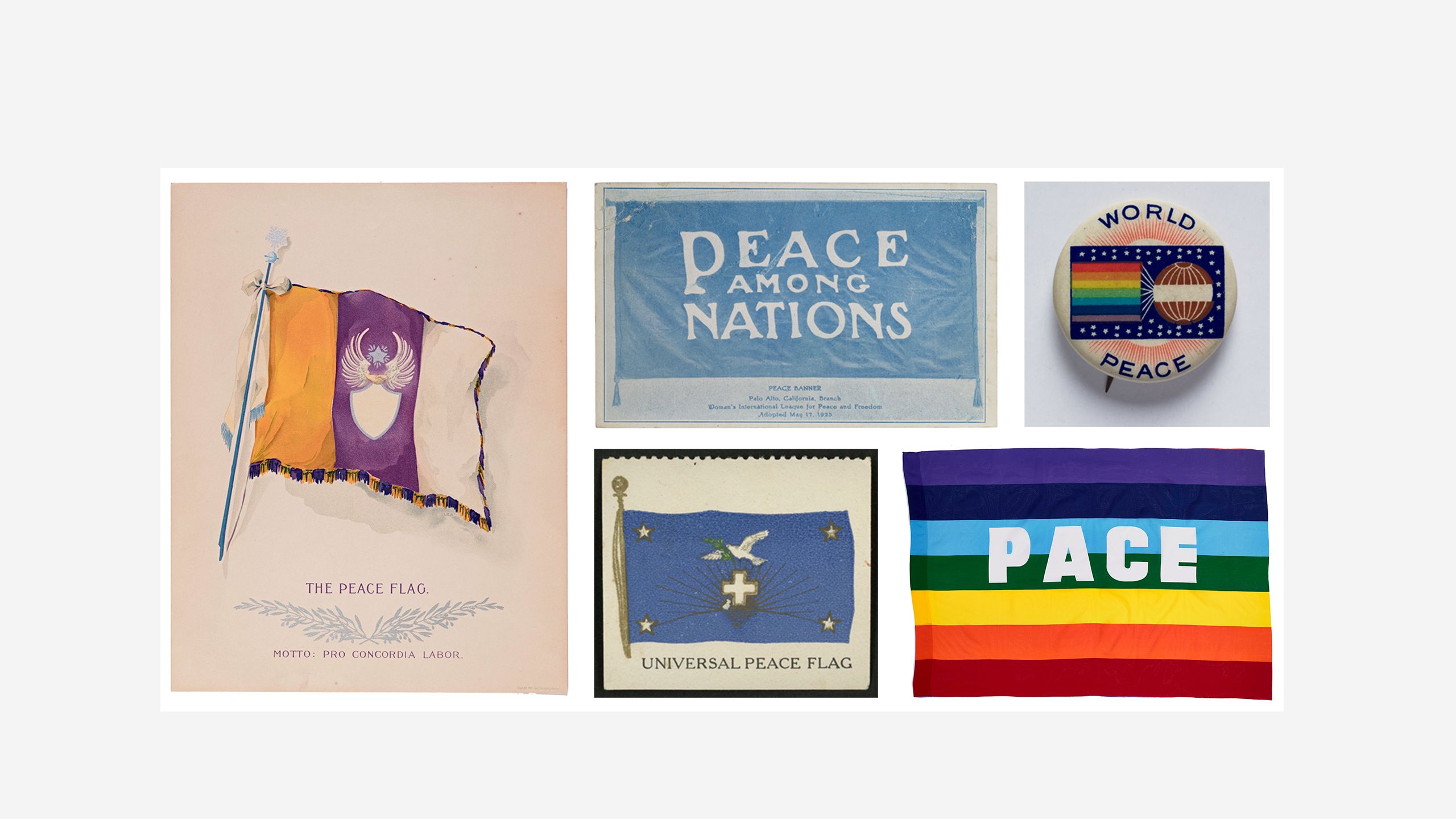

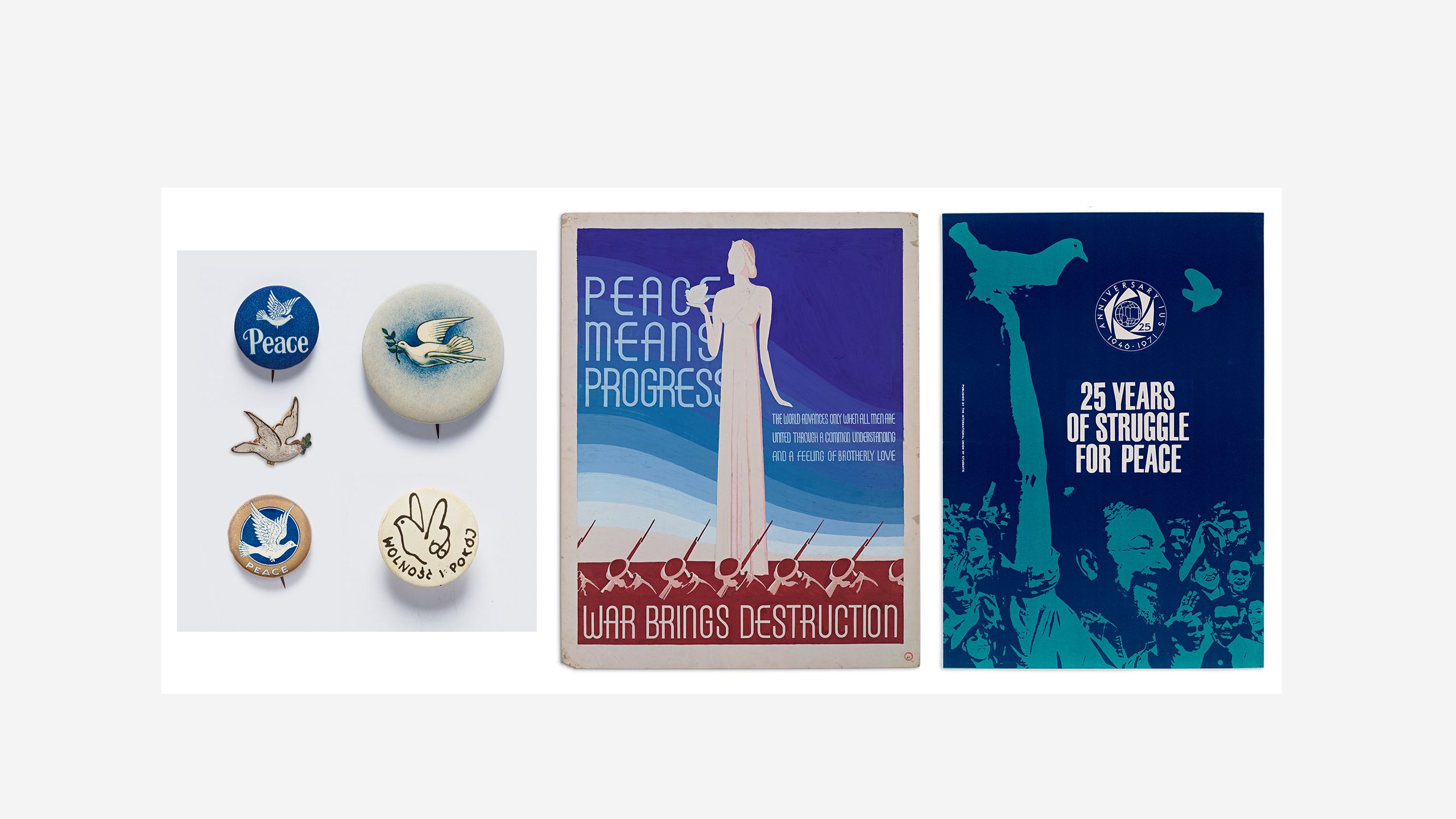


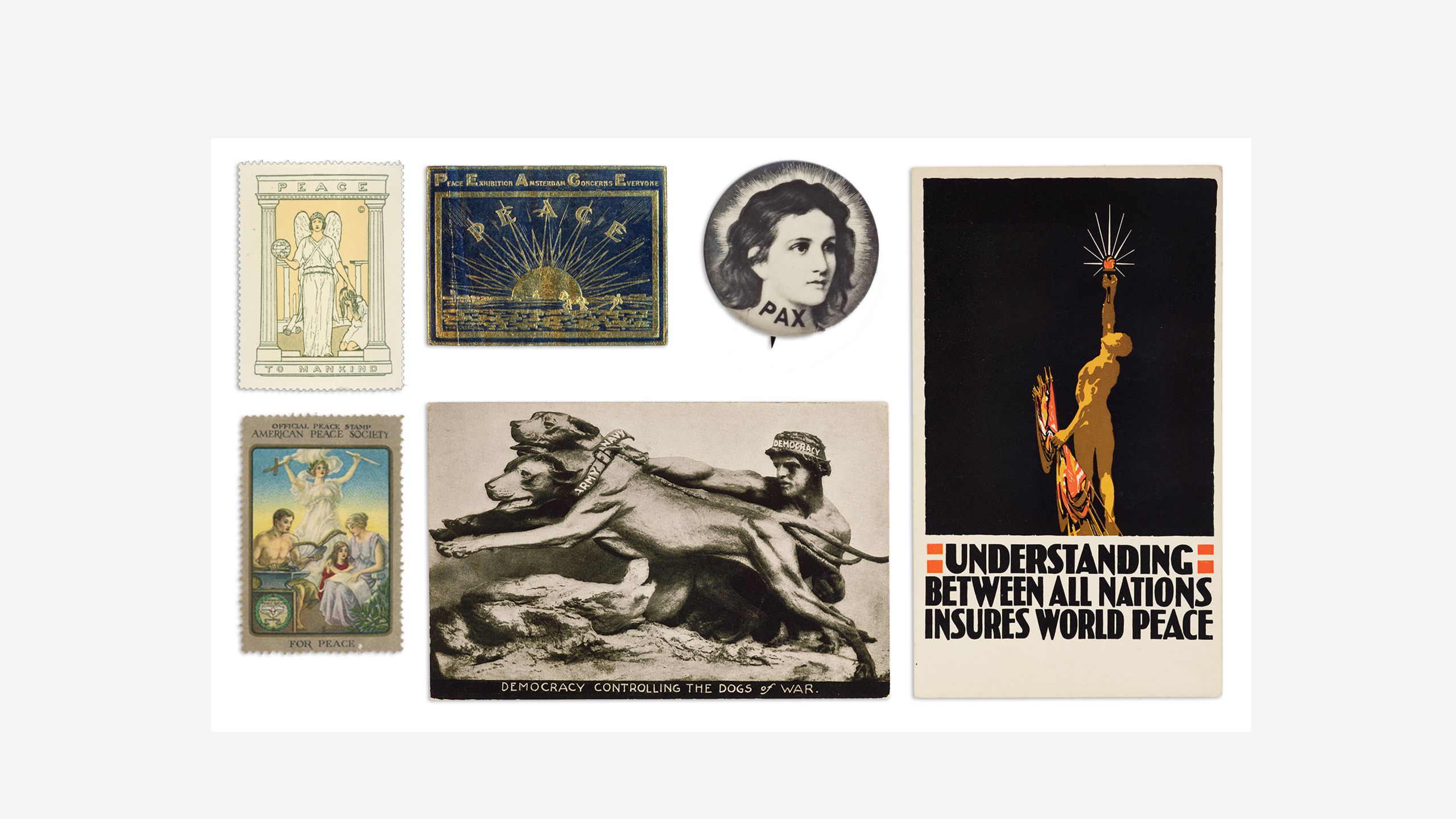
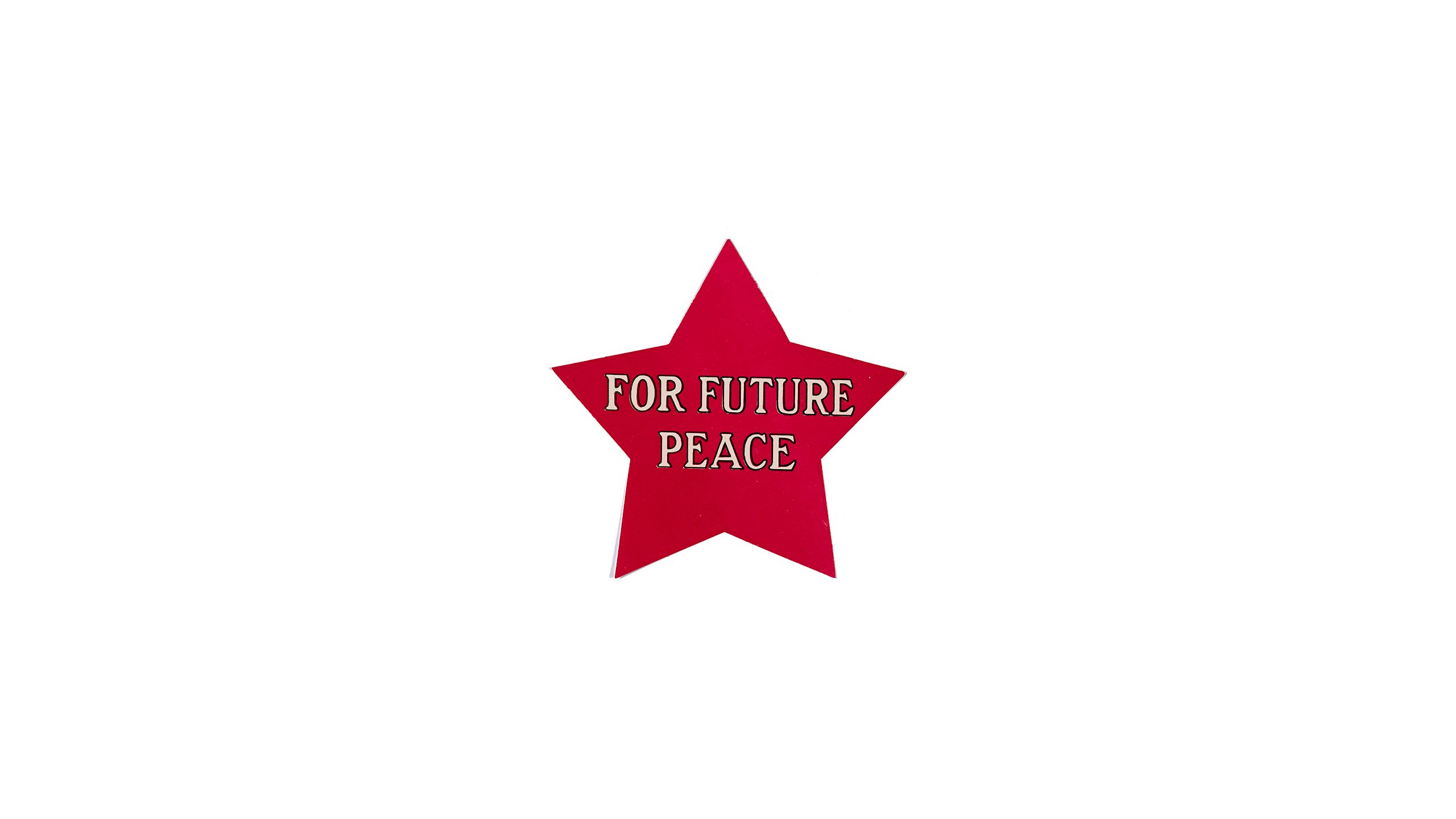
Peace flags have been prominently featured among the symbols used by peace advocates in the modern era.
The dove has been a symbol of peace since early Christianity. Originally representing the peace of one's soul, it quickly evolved. In the twentieth century, it has been a steadfast symbol for political peace movements.
Pax is the Roman personification of peace in goddess form. She was a common symbol for peace movements, seen here in examples from around the time of the First World War.
Women for Peace
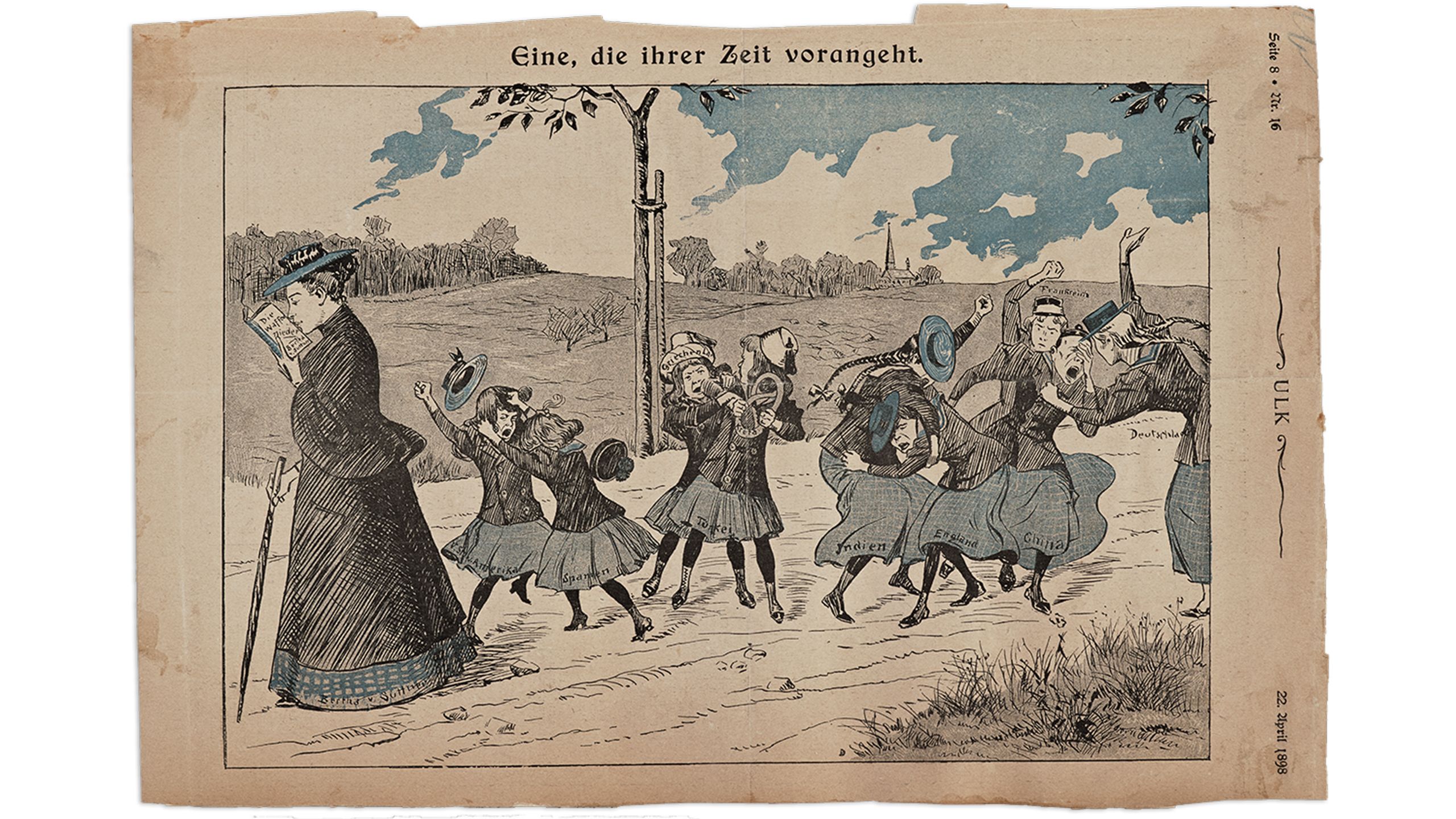
The assassination of Austrian Archduke Franz Ferdinand, in Sarajevo on June 28, 1914, lit the fuse that ignited the First World War. One week earlier, Bertha von Suttner, a native of Prague and the first woman to receive the Nobel Peace Prize, had died in Vienna. Pacifists around the world grieved the loss of the woman heralded as the mother of the international peace movement.
American delegates to the International Congress of Women aboard the Noordam, 1915. Library of Congress, Prints & Photographs Division
American delegates to the International Congress of Women aboard the Noordam, 1915. Library of Congress, Prints & Photographs Division
Women had for years been at the forefront of that movement, during a time when their opportunities to participate in public discourse were otherwise limited. Leading the way in the United States was the pioneer social worker, feminist, and future Nobel Peace Prize-recipient Jane Addams. Although most feminist leaders supported President Woodrow Wilson’s decision to enter the United States into the war, in April 1917, a small group of prominent women, Addams among them, persisted in their pacifism.
Letter from Jane Addams to David Starr Jordan, December 8, 1914. David Starr Jordan Papers, Hoover Institution Archives
Letter from Jane Addams to David Starr Jordan, December 8, 1914. David Starr Jordan Papers, Hoover Institution Archives
Bertha von Suttner, n.d. Alfred Hermann Fried Papers, Hoover Institution Archives
Bertha von Suttner, n.d. Alfred Hermann Fried Papers, Hoover Institution Archives
The Way to a Warless World by Evelyn Riley Nicholson, 1924. Hoover Institution Library. The author was a leader for women's equality especially in the Methodist Church, which placed this book in the cornerstone of the Church Center for the United Nations in 1962.
The Way to a Warless World by Evelyn Riley Nicholson, 1924. Hoover Institution Library. The author was a leader for women's equality especially in the Methodist Church, which placed this book in the cornerstone of the Church Center for the United Nations in 1962.
The New Left
Countercultures for Peace
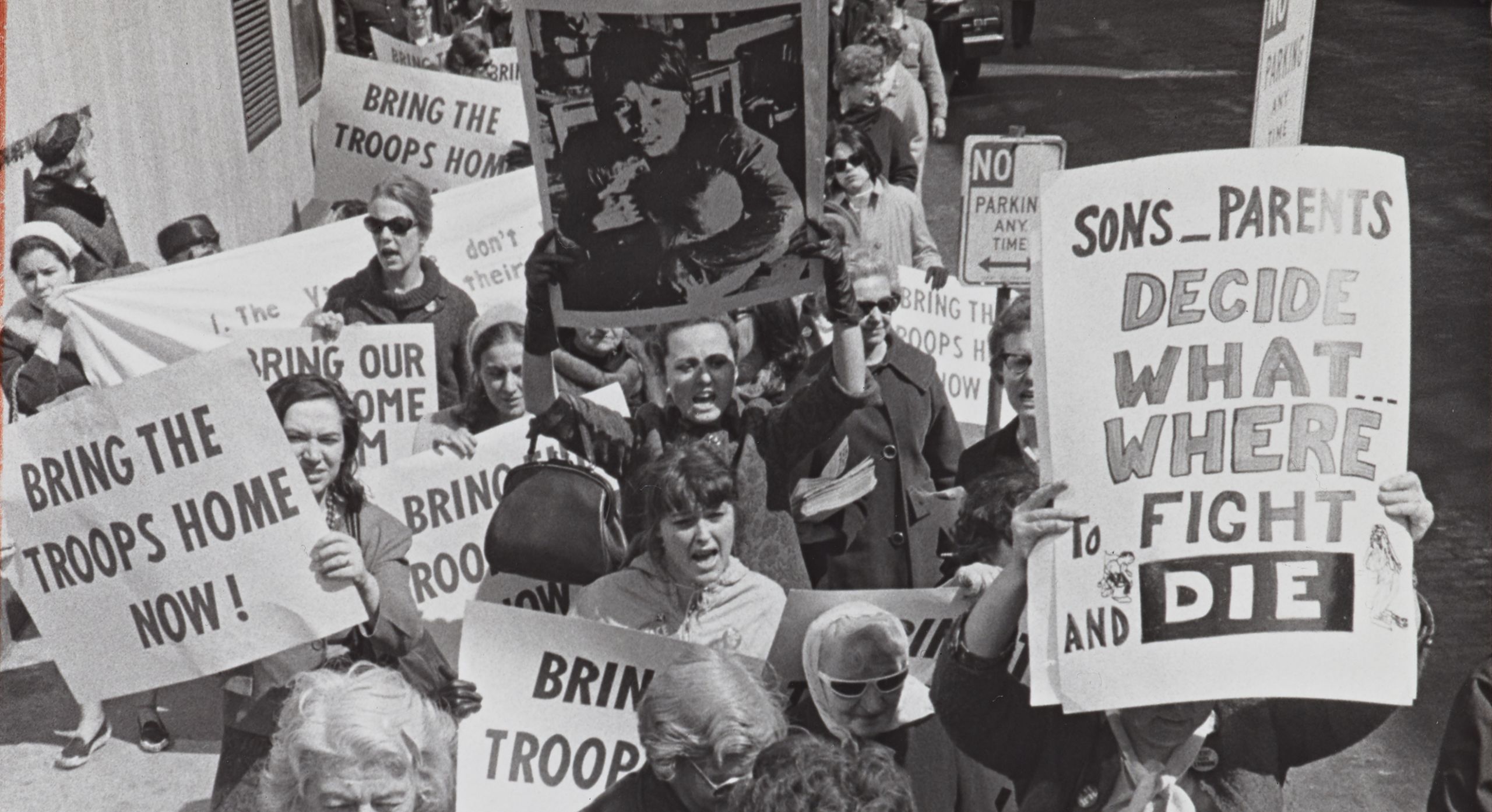
In 1969, the Hoover Institution acquired the first materials for the New Left Collection, which documents the radical movements for political and social change in the United States during the turbulent 1960s and 1970s. Topics covered in the collection include the movement against the Vietnam War, student radicalism, the civil rights movement, revolutionary organizations, the women’s liberation movement, and the counterculture. There is a special emphasis in the collection on protest movements that emerged on college campuses in the San Francisco Bay Area. The Hoover Institution's growing interest in domestic policy studies influenced its acquisition of this collection.
The author of The New Left in America (1974), Edward J. Bacciocco, was a Hoover National Fellow whose research into the New Left movement encouraged the growth of the Library & Archives holdings on the topic. To listen to Bacciocco discuss his research at the Commonwealth Club of California in 1972, click here.
The author of The New Left in America (1974), Edward J. Bacciocco, was a Hoover National Fellow whose research into the New Left movement encouraged the growth of the Library & Archives holdings on the topic. To listen to Bacciocco discuss his research at the Commonwealth Club of California in 1972, click here.
Vets for Peace in Vietnam, n.d. New Left Collection, Hoover Institution Archives
Vets for Peace in Vietnam, n.d. New Left Collection, Hoover Institution Archives
Peace Rally, New York City, by Hermes, October 15, 1969. The Militant Photographic Collection, Hoover Institution Archives
Peace Rally, New York City, by Hermes, October 15, 1969. The Militant Photographic Collection, Hoover Institution Archives
Peace protesters, April 15, 1967. The Militant Photographic Collection, Hoover Institution Archives
Peace protesters, April 15, 1967. The Militant Photographic Collection, Hoover Institution Archives
Peace protesters, by Hermes, April 15, 1967. The Militant Photographic Collection, Hoover Institution Archives
Peace protesters, by Hermes, April 15, 1967. The Militant Photographic Collection, Hoover Institution Archives
Disarmament and Peace Demonstration, New York City, June 12, 1982. The Militant Photographic Collection, Hoover Institution Archives
Disarmament and Peace Demonstration, New York City, June 12, 1982. The Militant Photographic Collection, Hoover Institution Archives
Peace protesters, by Della Rosa, n.d. The Militant Photographic Collection, Hoover Institution Archives
Peace protesters, by Della Rosa, n.d. The Militant Photographic Collection, Hoover Institution Archives
Dissident Art
The Political Art of Wolfgang Janisch

Wolfgang Janisch (1940– ) is a German photo-collage artist and peace activist. Janisch’s early years were defined by the turmoil of life in wartime and postwar Berlin. A resident of East Berlin, Janisch was often ideologically at odds with the Soviet authorities, and his nonconformist views are very much in evidence across his large body of work. Janisch created hundreds of posters that satirically conveyed his critical view of the communist government. Janisch has also been active in several organizations promoting the peace movement in Germany.
Staat (State), lithograph by Wolfgang Janisch, 1988. Wolfgang Janisch Papers, Hoover Institution Archives
Staat (State), lithograph by Wolfgang Janisch, 1988. Wolfgang Janisch Papers, Hoover Institution Archives
Janisch’s critique of the power of the state to stifle any form of dissent had to be cloaked in terms that would not arouse the wrath of the leadership of the GDR (German Democratic Republic, aka East Germany). When asked by the authorities about the content of the above poster, Janisch could always point out in his defense that the peace demonstrators in the picture were actually from “over there,” meaning West Germany. However, both Janisch and most of his audience knew against which state this protest was really aimed.
Ja-Sager (Yes-Men), lithograph by Wolfgang Janisch, 1985. Wolfgang Janisch Papers, Hoover Institution Archive
Ja-Sager (Yes-Men), lithograph by Wolfgang Janisch, 1985. Wolfgang Janisch Papers, Hoover Institution Archive
The above poster juxtaposes an image of the masses who uncritically followed Hitler during the Nazi era with the destruction of Dresden that, among other things, was the outcome of such blind obedience. Forty years after the end of WWII, Janisch felt it necessary to still challenge such “group-think” in the contemporary setting of the GDR.
Schwerter zu pflugscharen (Swords into plowshares), lithograph by Wolfgang Janisch 1991. Wolfgang Janisch Papers, Hoover Institution Archive
Schwerter zu pflugscharen (Swords into plowshares), lithograph by Wolfgang Janisch 1991. Wolfgang Janisch Papers, Hoover Institution Archive
The logo in the center of the above poster invokes a passage in the Hebrew Bible as well as the name of a widespread East German peace moment in the 1980s, when patches depicting this image were worn by activists. Janisch superimposed this image on a contemporary photograph of warriors in the Middle East to stress that the goals of the peace protesters of the 1980s are more relevant than ever.
Frieden ist möglich! (Peace is possible!), small lithograph by Wolfgang Janisch, 1988. Wolfgang Janisch Papers, Hoover Institution Archives
Frieden ist möglich! (Peace is possible!), small lithograph by Wolfgang Janisch, 1988. Wolfgang Janisch Papers, Hoover Institution Archives
The Hoover Institution Library & Archives wishes to receive notifications of alleged copyright infringement on this website. If you are a rights holder and believe that our inclusion of certain material on this website violates your rights, please contact: https://www.hoover.org/library-archives/collections/get-help/rights-and-permissions
© 2022 by the Board of Trustees of Leland Stanford Junior University.

